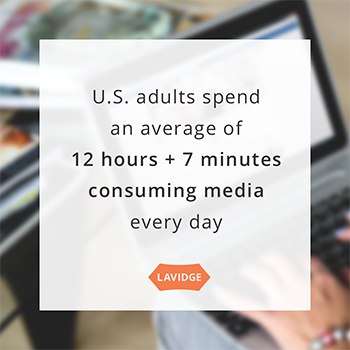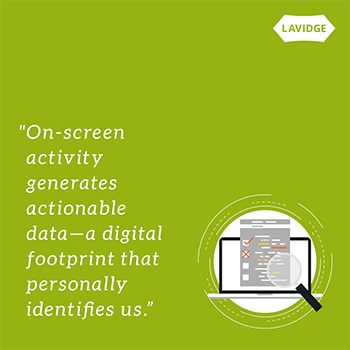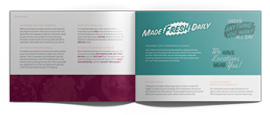Need fresh thinking? Help is a few keystrokes away.
The Opportunity of Cross-Channel Marketing
It was once relatively easy for national restaurant brands to reach consumers. Run a commercial on the evening news and a popular show, advertise in the local newspaper and hit a few billboards. Done—you’d be top-of-mind with your target audience when it’s time to dine out.
Then everything changed. Innovation and technology combined to give brands a headache. Cable television, internet and smartphones increased choice with the necessity of adopting digital advertising for restaurants. You should be able to reach more potential diners, right? Instead, this fracturing of the media market made it even more difficult for restaurants (well, all brands, really) to reach consumers.
Or did it?
Maximum connected
The problem also provides the solution. Here’s why.
The average U.S. adult spends 12 hours and 7 minutes of every day consuming media. That’s right. Here’s how that time stacks up.
- Television 4 hours, 4 minutes

- Mobile/smartphones 3 hours, 14 minutes
- Desktop/laptop 2 hours, 8 minutes
- Radio 1 hour, 26 minutes
- Other connected devices 28 minutes
- Print 25 minutes
- Other 21 minutes
The kicker is that those numbers* don’t include multitasking. So, if you’re watching TV and are also on your smartphone, the time isn’t counted twice. However, The USC Marshall School of Business estimates that multitasking increases a person’s total media consumption to more than 15 hours a day.
For consumers, this tremendous amount of media causes stress, eye strain and lack of socialization. No matter the size, when our eyes are on a screen we may not interact with people. It’s amazing we have time to eat and sleep.
Advantage: brands
For restaurants, the prevalence of screens is a good thing. That’s because most of our on-screen activity generates actionable data—a digital footprint that personally identifies us. Cookies on our computers, device IDs and signing in to websites and services all generate data. These breadcrumbs can identify who we are, where we are and what screen we’re looking at. And because we’re so connected—15 hours a day, remember—this allows brands to display unique, customized ads to us via automated programmatic advertising.
But it gets better, thanks to the capability of communicating to consumers across media channels and devices in a way that follows their purchasing journey. Literally.
Here’s how it works.
You’re looking for a new restaurant for a family celebration. At home on your desktop computer, you access Yelp and Google to search for local establishments. You head to Google Maps to see what restaurants are in your neighborhood. While at work later that day, you continue your search on your smartphone.
For good or bad, all this activity has identified: 1) you; 2) that you are in the market for restaurants; and 3) the various devices, screens and sites you’ve visited. This enables a restaurant brand to market to you in a consistent way, and across all your online devices. When you’re on your laptop at home, you might see an ad on Facebook promoting a local restaurant. Then you may see an ad for the same restaurant on your smartphone. And if you’re a passenger in a car, digital geofencing technology may display an ad with information about the restaurant being just a few blocks away. Television can also be used to deliver these cross-channel programmatic ads.
For savvy marketers at restaurants, this is all about managing the communication experience and talking directly to consumers where their eyes are. The stakes are high. In its 2016 State of Marketing study, Salesforce reports that high-performing corporate marketing teams are 34.4% more likely than underperforming teams to “be excellent” at creating and executing cross-channel customer experiences.**
Too creepy?
That’s a question restaurant marketers are grappling with. Some potential customers might not like being “followed” in such an overt way across devices, websites or social media channels. But CMOs shouldn’t worry. Research by Forrester and Adlucent has found that consumers like personalized advertising that helps with online searching: 71% of consumers say they prefer ads that are customized to their interests and shopping habits. It's clear that personalization is good digital marketing strategy.
Need help?
Not sure where to begin with developing a restaurant digital strategy for cross-channel marketing? LAVIDGE has extensive experience in this space, including success running programmatic digital advertising campaigns for restaurants. Our restaurant marketing strategies are customized to help you stay ahead of restaurant trends in online marketing.
To learn more, give us a call at 480.998.2600 or send email to [email protected].
Cross what?
Courtesy of Oracle, here are four key cross-channel marketing statistics worth knowing.***
-
Two thirds of all shoppers regularly use more than one channel to make a purchase. A Wharton study found multi-channel shopping behavior—defined as a consumer’s usage of more than one channel somewhere in the shopping process all or most of the time—is the norm for a majority of consumers.
-
The average shopper makes on average 9.5 visits to a retailer’s site before deciding to buy. Just let that one sink in for a minute. Nine and a half visits to a website before deciding to buy. And rest assured said visits are being made across multiple channels: i.e. mobile, desktop, etc.
-
Customers who shop on more than one channel have a 30% higher Lifetime Value than those who shop on only one. This, perhaps more than any other stat, speaks to the clear and present need for a solid, robust cross-channel marketing strategy.
-
A mere 5% of marketers say they are “very much set up to effectively orchestrate cross-channel marketing activities.” This last stat comes courtesy of Econsultancy via their annual cross-channel marketing report.**** Another key finding from the report showed that while over two-thirds of responding companies agree their "priority is for all key marketing activities to be integrated across channels," only 39% say they "understand customer journeys and adapt the channel mix accordingly."
*: eMarketer, US Time Spent with Media, April 2017
**: Salesforce, 2016 State of Marketing
***: Oracle, 4 Cross-Channel Marketing Stats Marketers Need to Know Going into 2017
****: Econsultancy, Cross-Channel Marketing Report 2015
2017 Southwest Food Service Marketing Report

This article is a brief abstract of our exclusive and authoritative study that takes the guesswork out of food service advertising and marketing. Rather than speculating about what will drive consumers to action, we've asked them.


